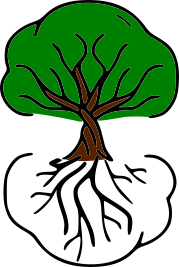In Literature Appetizer, Ben gives you just a taste of a book. Not meant to replace the full meal, this is meant to whet your appetite. Bon appetit!
“Survival of the fittest,” is the foundation of the Darwinian Evolutionary Theory. The weakest don’t have as many opportunities to pass along their genes, causing them to become extinct. But does ‘fittest’ have to mean competition?
Humanity has only been able to achieve civilization by working together. Cooperation often leads to the advancement of our species, rather than its downfall. Would that strategy work with other organisms? More than just small levels of symbiotic relationships; can non-humans make complex, cooperative networks?
Building upon indigenous knowledge and academic research, Dr. Suzanne Simard became one of the first scientists to have the public consider that question. Her research was summed up as the ‘wood wide web.’
In simplest terms, the healthiest forests have trees communicating to one another through a fungal network underground. Let’s break that down before moving on.
Trees can give resources, like carbon and water, to this fungal network. Then other trees can take those resources as needed.
While this happens on small scales, even between different species, this shines when forests can grow old. The tallest, biggest, oldest tree becomes the ‘Mother Tree.’ This Mother Tree has a huge influence over how resources are spread throughout a forest. Yes, even influencing trees that do not share her species. In her death she will often spread her nutrients far and wide, so that the forest can survive after she is gone.
This book does an excellent job describing how Dr. Simard came to that conclusion over her life’s work.
…but I have to be honest. This just wasn’t the book for me.
Jurassic Park is the story of both the cost of scientific progress and the human spirit getting out of dangerous situations. The audience wants to see the main characters survive, even overcoming great challenges.
To me, the dinosaurs are the main characters. I want to see them succeed. The problem is the humans keep getting away! So while the Jurassic Park films are fun to watch, I often am sad by the end because the humans get away when the dinosaurs should have been fed.
In Finding the Mother Tree, Dr. Simard relates many of her findings to specific events in her life. The book becomes not just scientific, but autobiographical. She is an excellent writer, and the scientific connections she makes to her own life are meaningful.
I highly recommend this book if you are interested in understanding the ‘wood wide web,’ and want an emotional human story.


